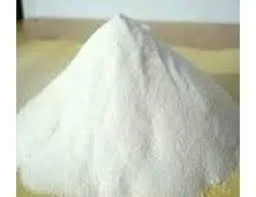
Каст . 06, 2024 10:03 Back to list
hydroxyethyl cellulose viscosity
Understanding Hydroxyethyl Cellulose Viscosity Importance and Applications
Hydroxyethyl cellulose (HEC) is a non-ionic, water-soluble polymer that is widely used in various industries due to its unique properties. One of the key characteristics of HEC is its viscosity, which plays a crucial role in determining its functionality across diverse applications. Understanding the viscosity of hydroxyethyl cellulose is essential for optimizing its use in formulations, whether in pharmaceuticals, personal care products, or food processing.
What is Viscosity?
Viscosity is a measure of a fluid's resistance to deformation or flow. In the context of hydroxyethyl cellulose, viscosity indicates how thick or thin a solution of the polymer will be at different concentrations and temperatures. This property is influenced by several factors, including molecular weight, concentration, temperature, and the presence of additives or surfactants.
Significance of HEC Viscosity
The viscosity of hydroxyethyl cellulose influences several properties and behaviors of the systems in which it is used
1. Thickening Agent HEC is commonly used as a thickening agent in formulations. The viscosity of HEC directly affects the texture, stability, and application of products like shampoos, lotions, and paints. A higher viscosity can enhance the thickness, providing a more luxurious feel in personal care products and better coverage in paints.
2. Stabilization In many applications, HEC helps stabilize emulsions and suspensions. The right viscosity ensures that particles remain evenly dispersed, preventing sedimentation in products like sauces or salad dressings.
3. Controlled Release In pharmaceutical applications, viscosity is crucial for controlling the release rate of active ingredients from gels or ointments. Formulations with high viscosity can slow down the release, allowing for prolonged therapeutic effects.
4. Rheological Properties The flow behavior of HEC solutions is characterized by their rheological properties, which describe how they respond to applied forces. This property is important in ensuring that products are easy to apply yet have the desired performance once applied.
Factors Affecting Viscosity
Several factors can influence the viscosity of hydroxyethyl cellulose
hydroxyethyl cellulose viscosity

- Molecular Weight Generally, higher molecular weight HEC will exhibit higher viscosity. The polymer chains are longer, leading to greater entanglement and interaction in solution. - Concentration As the concentration of HEC increases, viscosity tends to increase as well. However, there is a limit beyond which the viscosity may not significantly rise, known as the critical concentration.
- Temperature Viscosity can also vary with temperature. Typically, as temperature increases, viscosity decreases, making HEC solutions easier to handle and process.
- Additives The presence of other substances can modify the viscosity of HEC solutions. For example, salts may contribute to ionic strength, which can either enhance or reduce the viscosity depending on the specific formulation.
Applications of Hydroxyethyl Cellulose Viscosity
The versatility of hydroxyethyl cellulose is showcased in various industries
- Pharmaceuticals HEC is used in drug delivery systems and topical formulations where viscosity plays a role in drug release and retention.
- Cosmetics In the personal care industry, HEC is found in creams, lotions, and gels where viscosity is key to providing an appealing texture and stability.
- Food Products In the food industry, HEC acts as a thickener and stabilizer in products such as sauces and dressings.
- Construction Its thickening and stabilizing properties make HEC valuable in cement and gypsum-based products.
Conclusion
The viscosity of hydroxyethyl cellulose is a critical property that influences its functionality across various applications. Understanding the factors that affect viscosity and the implications for product performance is essential for formulators in multiple industries. By tailoring the viscosity of HEC-based formulations, manufacturers can enhance product efficacy and consumer satisfaction. As research continues to advance, the applications of hydroxyethyl cellulose are likely to expand, highlighting its significance in modern product formulation.
-
The Widespread Application of Redispersible Powder in Construction and Building Materials
NewsMay.16,2025
-
The Widespread Application of Hpmc in the Detergent Industry
NewsMay.16,2025
-
The Main Applications of Hydroxyethyl Cellulose in Paints and Coatings
NewsMay.16,2025
-
Mortar Bonding Agent: the Key to Enhancing the Adhesion Between New and Old Mortar Layers and Between Mortar and Different Substrates
NewsMay.16,2025
-
HPMC: Application as a thickener and excipient
NewsMay.16,2025
-
Hec Cellulose Cellulose: Multi functional dispersants and high-efficiency thickeners
NewsMay.16,2025







